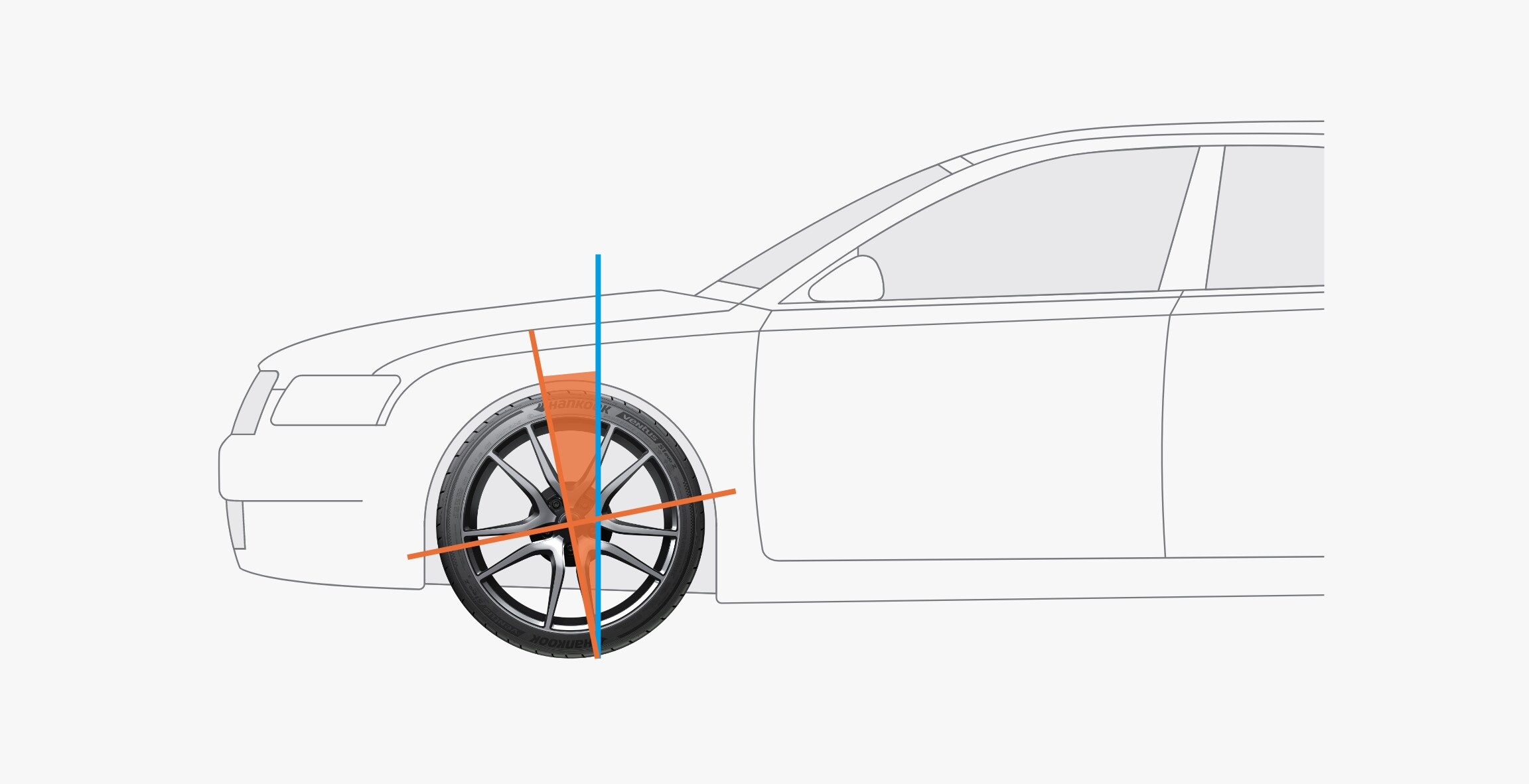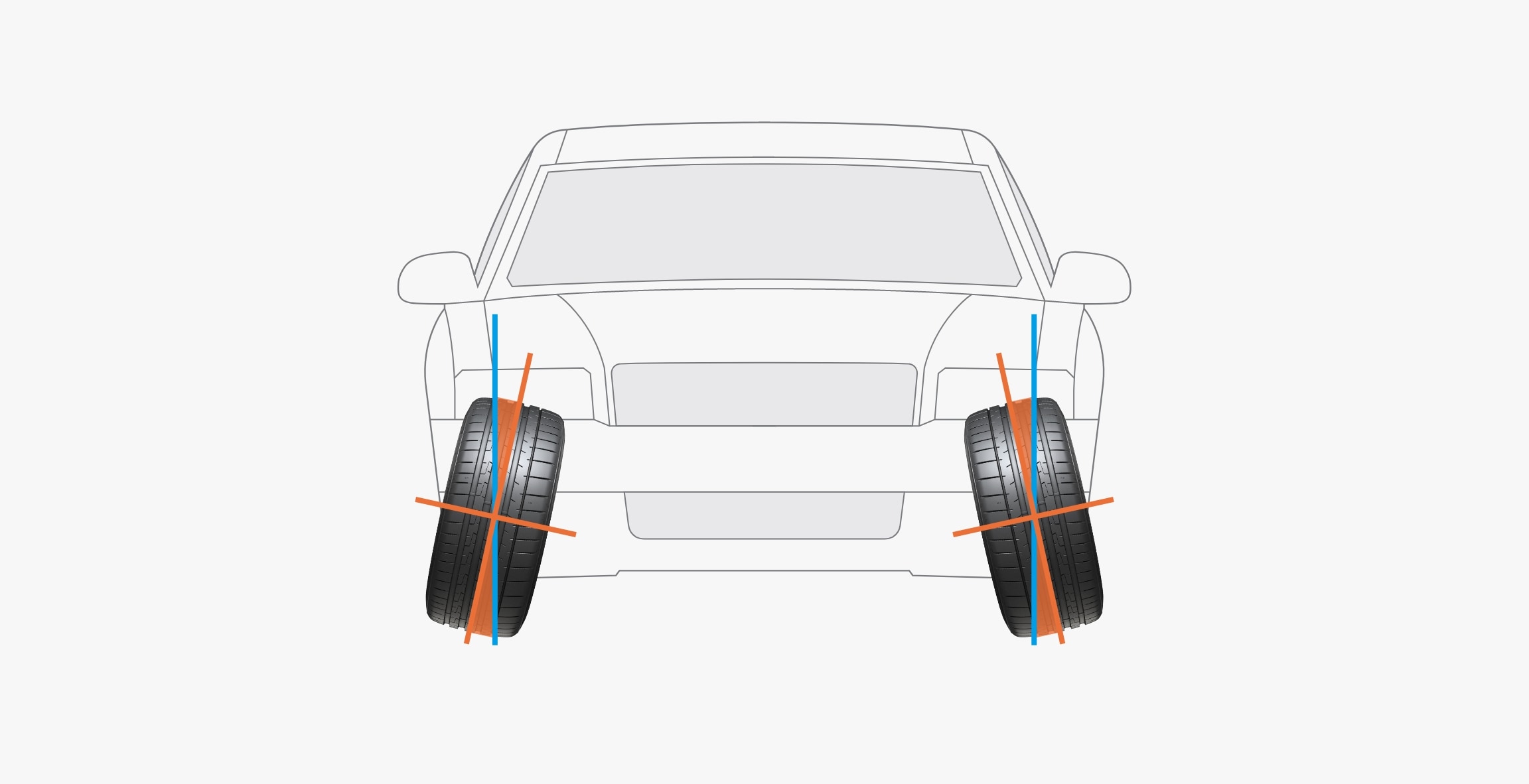
Care Guide
Wheel Alignment
To prevent vibration, skidding, noise, and wear, wheel alignment inspection is necessary. Learn about useful information regarding wheel alignment and how to perform an inspection.
The Importance of Wheel Alignment
-
If your tyres are wearing unevenly, such as the inside shoulder of the tyre wearing faster than the rest of the tread, your vehicle may be out of alignment. This conditions not only shorten the life of your tyres but adversely affect the handling characteristics of your vehicle, which could be dangerous. If you detect irregular wear, have your alignment checked immediately.
Aspects of Wheel Alignment
- Caster
- Camber
- Toe

Caster
Caster angle settings when compared (from the side) allow the vehicle manufacturer to balance steering effort, high speed stability and front end cornering effectiveness. Increasing the amount of positive caster will increase steering effort and straight line tracking as well as improving high speed stability and cornering effectiveness, whereas decreasing positive caster results in less steering stability.

Camber
The camber prevents tyre abrasion and increases steering manipulation. According to the angle at which the top or bottom portion of a tyre pulls inward or outward when the car is on a flat surface, there are three types of camber: positive, negative and neutral.
With the development of suspension and auto technology, most vehicles today have negative camber. In the case of negative camber, the car tilts when cornering due to centrifugal force. The outer tyres area of contact with the road surface increases, which allows for safe cornering.

Toe
The toe refers to the directional difference between the front and back of a tyre formed by the upper part of an axis on a flat plane. There are two types of toe: toe-in and toe-out. Toe-in indicates the tyres front part pulled inward and toe-out indicates the tyres front part pulled outward. In the case of severe toe-out, abrasion occurs on the tyres inner surface. In the case of severe toe-in, abrasion occurs on the tyres outer surface. Both cases experience a high degree of resistance from the road surface, which results in decreased drivability and greater fuel cost. A controlled degree of toe-in increases safety in straight line driving and offsets inner abrasion that occurs due to negative camber.
When to Check Wheel Alignment
-
We recommend checking wheel alignment during an annual inspection or for every 12,000 miles driven.
An inspection is required when,
-
The car has been in an accident.
-
After tyre replacement.
-
When there is abnormal tread wear on the tyres shoulder.
-
When the handling is unstable and/or wobbles.
-
When ride quality has become rougher or fuel economy has declined.

